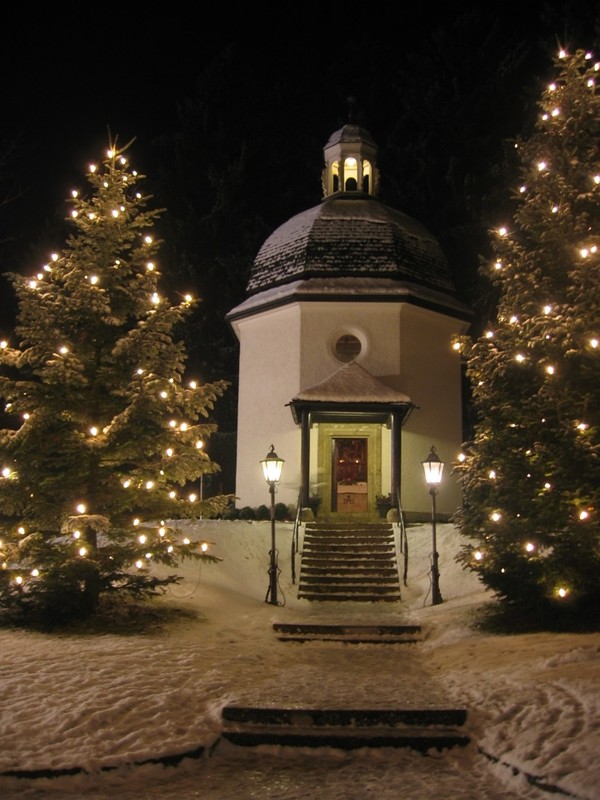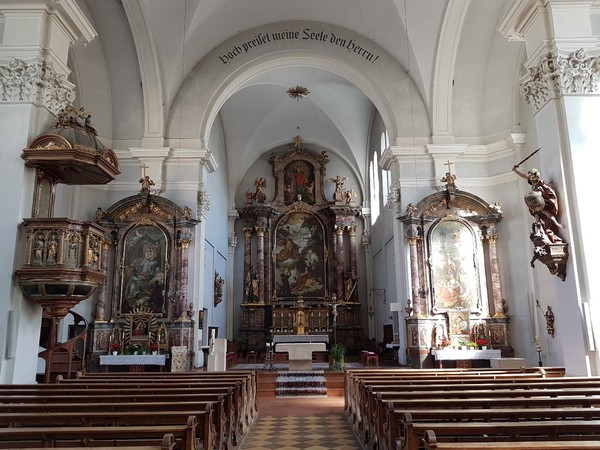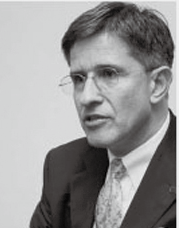오스트리아 크리스마스 캐롤의 기원

[아츠앤컬쳐] 잘츠부르크는 1815년경 이후 완전히 몰락했다. 나폴레옹과의 전쟁으로 사람들은 도탄에 빠졌다. 오스트리아와 독일 바이에른 주의 국경을 가르는 잘자흐강 근처의 작은 마을 오베른도르프는 괜찮았던 소금 운송업이 헝가리로의 운송권을 잃게 되자, 빈곤함에 가족은 뿔뿔이 흩어지고 설상가상으로 홍수 재해와 흉작으로 상황이 악화되었다. 오베른도르프의 성 니콜라스 교회의 오르간 풀무는 쥐가 갉아먹어 더 이상 작동하지 않았다.
1818년, 이런 분위기에서 26세의 보조 사제 요제프 모어는 크리스마스 이브 아침에 깊은 눈속을 걷고 있었다. 그의 주머니에는 2년 전에 쓴 시 ‘고요한 밤, 거룩한 밤’이 적힌 쪽지가 있었다. 모어는 교사이며 오르간 연주자인 그의 친구 프란츠 그루버에게 달려갔다. 그루버는 즉시 가사에 멜로디를 입혀야 했다. 축복처럼 오르간이 일시적으로 작동했기 때문에 기타 반주가 있는 2부 합창곡을 저녁 크리스마스 미사 시간까지 작곡을 마쳤다. 모어는 테너, 그루버와 양들은 베이스를 맡았다. 그들은 구원자 그리스도께서 오셔서 마침내 위로와 확신을 주신 것이라 여기며 흥분했다.

그리고 그 노래는 전 세계에 퍼져 대히트작이 되고 수년이 지나며 캐롤 ‘O Tannenbaum’(소나무야)을 능가했다. 티롤의 라이너 가수 가족이 러시아 황제 알렉산드르 1세와 오스트리아 황제 프란츠 1세 앞에서 불렀다. 1831년 라이프치히에서 시작하여 8년 후에는 뉴욕에도 퍼졌고 그 열광은 지금까지도 계속되고 있다. 독일어권에서는 현재 크리스마스 캐롤 중 ‘고요한 밤’이 1위이며, 그 뒤를 역시 독일의 ‘O du Fröhliche’와 ‘O Tannenbaum’이 잇고 있다.
‘O du Fröhliche’는 1816년 독일 시인 요하네스 다니엘 포크가 개신교 교회 공동체를 위해 독일 바이마르 시에서 쓴 것이다. 독일은 프랑스와 계속되는 전쟁으로 인해 살기가 매우 팍팍했다. 포크는 짧은 기간에 네 자녀를 잃고나서 가난한 고아를 위한 노래를 짓기로 결정했다. 그런데 ‘O du fröhliche’는 변형된 버전으로 크리스마스 찬송가로 알려졌다. 첫 번째 구절만 포크가 지은 것이고 다른 두 구절은 포크의 조수인 하인리히 홀츠슈허가 공연 작품을 위해 작곡한 것이어서, 노래는 순수한 크리스마스 캐롤로 다시 헌정되었다. 이 가사는 1826년 크리스마스에 Bayerschen Landbote에서 익명으로 처음 인쇄되었다.

세 번째로 유명한 독일 민요 ‘O Tannebaum’은 16세기로 거슬러 올라가지만 오늘의 가사가 추가된 것은 19세기가 되어서다. 신학자이자 교육자인 조아킴 자나크가 1919년에 첫 번째 구절을 썼고, 교사이자 작곡가인 에른스트 앤슈츠가 1924년에 이어서 두 구절을 썼다.
‘고요한 밤 거룩한 밤’은 300개 이상의 언어로 번역되었으며 2011년부터 유네스코 무형문화유산에 등재되었다. 모어는 세계가 그의 캐롤에 열광하는 것을 보지 못했다. 오늘날 수천 명의 관광객이 매년 오베른도르프의 고요한 밤 예배당을 순례한다.모어와 그루버가 1818년 크리스마스 이브에 처음으로 ‘고요한 밤 거룩한 밤’을 불렀던 곳이 바로 이곳이다.

Silent Night, Holy Night
An Austrian Christmas carol! A history of origin
The Salzburg county is completely emaciated after the years around 1815. The wars against Napoleon brought hunger and hardship to the people. The Salzach river near the small Austrian village Oberndorf becomes the Austrian - Bavarian state border. Families are torn apart. The good business of Salt transport, Skippers lose their privileges for transporting salt to Hungary and become impoverished. Flood disasters and crop failures exacerbate the hardship. And to make matters worse, mice have chosen the bellows of the organ of St. Nicholas Church in Oberndorf as their feast. Nothing works anymore.
In this mood, the 26-year-old assistant Priest Joseph Franz Mohr trudges through the deep snow on the morning of Christmas Eve. The year is 1818. In his pocket is a note with a poem he had written two years earlier: ‘Silent Night, Holy Night’. Mohr runs to his friend, the teacher and organist Franz Xaver Gruber. He should write a melody on the text in no time at all. Two-part with guitar accompaniment, since the organ has blessed the temporal. In the evening, just in time for the Christmas mass, the work is done. Mohr sings the tenor, Gruber the bass and the sheep in Oberndorf's St. Nicholas Church - they are thrilled. Christ, the Savior, is here and finally gives comfort and confidence.

And then the song goes around the world, becomes a one-hit wonder and over the years even an evergreen. The Tyrolean singer family Rainer presents it to the Russian Tsar Alexander I and the Austrian Emperor Franz I. It was first heard in Leipzig in 1831. Eight years later in New York. The enthusiasm continues to this day: In the German speaking region, ‘Silent Night’ is currently the top hit among Christmas carols, followed by ‘O du Fröhliche’ which has a similar origin in Germany and ‘O Tannenbaum’.
‘O du Fröhliche’ was written in 1816 in the German city of Weimar for the Protestant Church Community by the German poet Johannes Daniel Falk. In Germany, as well, was very difficult to survive because of the France attack and on-going war. Falk himself lost four of his children in a short time, then he decided to write a song for poor orphans. However, O du fröhliche became known in a modified version as a Christmas hymn, in which only the first verse literally comes from Johannes Daniel Falk. The two other Christmas verses were composed by Heinrich Holzschuher, an assistant of Falk, for a performance piece <zur Feyer des heiligen Weihnachts-Festes>, and the song was thus rededicated to a pure Christmas carol. This text was first printed anonymously at Christmas 1826 in the Bayerschen Landbote.

The third famous German folk tune ‘O Tannebaum’ dates back to the 16th century, but it was not until the 19th century that today's text was added. The theologian and pedagogue Joachim August Zarnack wrote the first verse in 1919, the teacher and composer Ernst Anschütz wrote the second and third in 1924.
‘Silent Night, Holy Night’ has been translated into over 300 languages and since 2011 it has been on the list of UNESCO Intangible Cultural Heritage. Joseph Mohr did not experience the global enthusiasm for his Christmas carol. Today, thousands of tourists make the pilgrimage to the Silent Night Chapel in Oberndorf every year. It replaced the St. Nicholas Church, which had simply been demolished before the great glory of the ‘Silent Night’. It was here that Joseph Franz Mohr and Franz Xaver Gruber sang their ‘Silent Night, Holy Night’ for the first time on Christmas Eve 1818.

글 | 볼프강 슬라빈스키 Wolfgang Slawinski
서울명예시민
한·오스트리아협회 부회장

